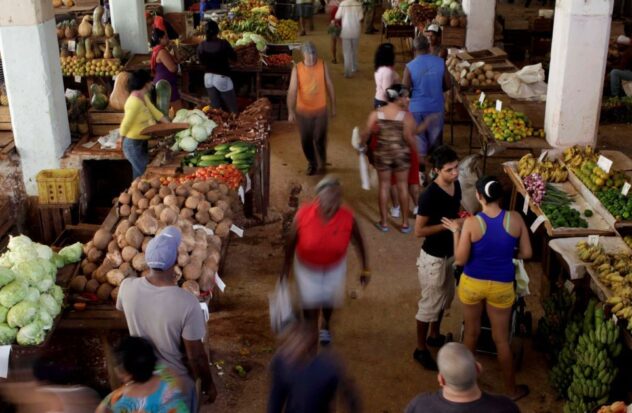HAVANA – The Cuban regime has put a price cap on half a dozen basic products for retail sale, a measure that supposedly aims to lower inflation in a country that has been subjected to its worst economic crisis, raising doubts among experts in the field about the long-term results of this action.
Announced and postponed several times in recent days, the regulations also highlighted the importance acquired by the new small and medium-sized private companies that import and sell food, which emerged only in 2021.
On Tuesday, several stores in Cuba were already displaying signs with the new prices on their shelves.
“Limited prices”
According to the resolution of the Ministry of Finance and Prices, the products with limited prices will be chicken – this should be sold at about 680 Cuban pesos, the equivalent of about two dollars, at the parallel exchange rate usually used among the population -, the liter of vegetable oil – at 990 pesos, almost three dollars – , the kilo of powdered milk, at 1,675 pesos, that is, almost five dollars.
In addition, sausages cost 1,045 pesos, equivalent to three dollars; pasta costs 835 pesos —2.45 dollars— and powdered detergent costs 630 pesos, or 1.80 dollars.
The resolution also stipulated that companies that import products currently sold at a price limit will be exempt from paying the customs tax on imports.
Economic crisis
The average salary in Cuba can reach between 4,000 (11 dollars) and 7,000 Cuban pesos (20 dollars) per month in the state sector.
The economic crisis began at least in 2019 with the paralysis caused by the COVID-19 pandemic, an increase in US sanctions against the island and a financial reform package imposed by the dictatorship itself that sank purchasing power.
Private retail businesses, selling directly to the population, are a novelty in Cuba and have emerged by the thousands since the opening to small and medium-sized enterprises (SMEs) of all kinds, which occurred in 2021, since since 1968, following a process of nationalization of private companies, they ceased to exist.
The decision to once again give way to SMEs was one of the most important steps taken by the island – whose model remains state-run and centralised – in terms of private initiative.
Supply booklet
For the previous five decades, it was the State and its companies that were responsible for importing and selling food, both in highly subsidized stores for the population through a ration book for each citizen – which are still in place today but with many limitations – and in stores at market prices, with which the requirements of households were met.
The state-owned stores remain active, but now they share the space with these new private businesses that have become very popular because they guarantee many products that used to be difficult to obtain.
Subjected to its worst economic crisis in decades, Cuba recorded, according to the regime’s data, inflation of 70% in 2021, 39% in 2022 and 30% in 2023. But experts indicated that these figures are far from the real ones.
Doubts
Among experts, the price cap measure generated more doubts than certainties, and several made this known in comments and posts on their accounts.
“What we see today in Cuba is not an effective state ‘regulation’ of private activity, but rather a rustic administrative practice derived from the notion that private profit should be a pre-established fact and not a result of market operations,” said Cuban economist Pedro Monreal in his X account.
Economist Ricardo Torres of the Center for Latin American and Latino Studies at American University in Washington reacted in the same way: “There is no serious debate, it is about focusing on the manifestation of the phenomenon, the high prices, and not talking about the causes,” he explained.
The Cuban regime has previously capped prices, especially in agricultural products and domestically produced meats.
According to the expert Torres, no measure will be effective if it does not involve incentives for national production – which replaces imports – the development of a competitive private sector and the restructuring of state companies that are not efficient. In addition, containing inflation would require a policy of adjustments – leaving aside many social services, for example – to state spending that the regime could not apply without costs for the population.
Source: With information from AP



